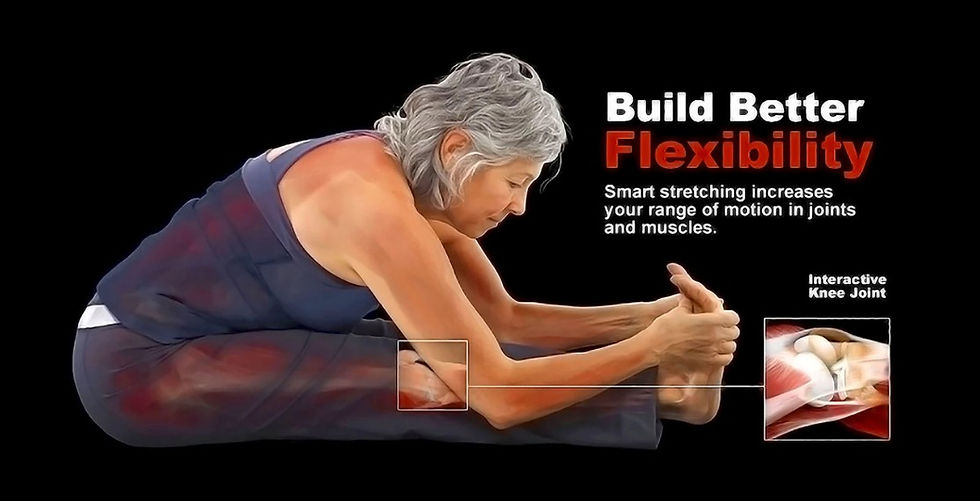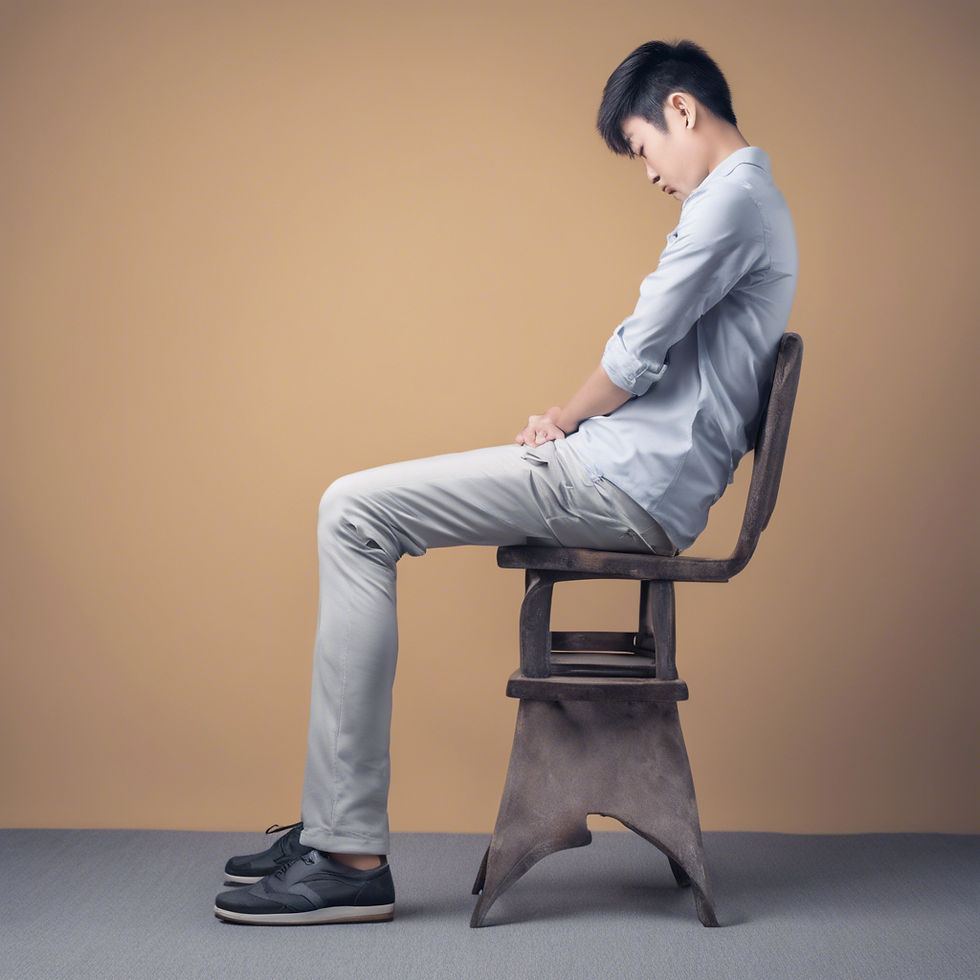Maintaining Mobility in Your 40s and 50s with Inner Fit Singapore
- Dec 27, 2024
- 2 min read

As we age, our bodies undergo natural changes that can affect our mobility. For Singaporeans in their 40s and 50s, it's crucial to proactively address these changes to maintain independence and quality of life.
Common Mobility Issues in This Age Group:
Decreased Muscle Mass and Strength: Sarcopenia, the age-related loss of muscle mass, becomes more pronounced in this decade. This can lead to weakness, difficulty with daily activities like lifting groceries or climbing stairs, and an increased risk of falls.
Reduced Flexibility: Stiffness in joints and muscles can limit range of motion, making it harder to bend, twist, and reach. This can impact activities like getting dressed, driving, and gardening.
Joint Pain and Arthritis: Osteoarthritis, a degenerative joint disease, can develop or worsen in this age group. It causes pain, stiffness, and inflammation in joints, particularly in the knees, hips, and spine.
Balance Problems: Age-related changes in balance and coordination can increase the risk of falls. This can be exacerbated by other factors like reduced muscle strength and vision problems.
The Role of Personal Training in Combating Mobility Issues:
A qualified personal trainer can play a vital role in helping Singaporeans in their 40s and 50s maintain and improve their mobility. Here's how:
Strength Training: A well-designed strength training program can help to build and maintain muscle mass, improving overall strength and functional capacity.
Flexibility and Range of Motion Exercises: Regular stretching and flexibility exercises can improve joint range of motion, reduce stiffness, and prevent injuries.
Balance and Coordination Training: Exercises like tai chi, yoga, and balance drills can improve balance and coordination, reducing the risk of falls.
Functional Training: Exercises that mimic daily activities, such as lifting, reaching, and twisting, can improve functional strength and make everyday tasks easier.
Personalized Approach: A good personal trainer will assess your individual needs and limitations, and create a customized program that is safe, effective, and enjoyable.
Motivation and Support: A trainer can provide encouragement, support, and accountability, helping you stay motivated and consistent with your exercise routine.
Beyond the Gym:
While personal training is crucial, maintaining mobility also involves other lifestyle factors:
Healthy Diet: A balanced diet rich in fruits, vegetables, and protein is essential for maintaining muscle mass and overall health.
Regular Checkups: Regular medical checkups can help identify and address any underlying health conditions that may be affecting mobility.
Staying Active: Incorporate physical activity into your daily routine, such as walking, cycling, or swimming.
By proactively addressing mobility concerns and working with a qualified personal trainer, Singaporeans in their 40s and 50s can enjoy a higher quality of life, maintain independence, and age gracefully.



Comments